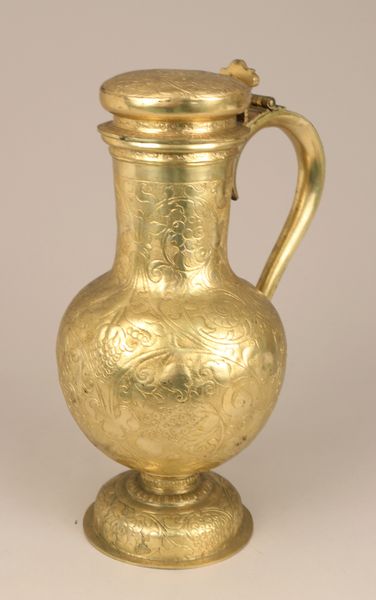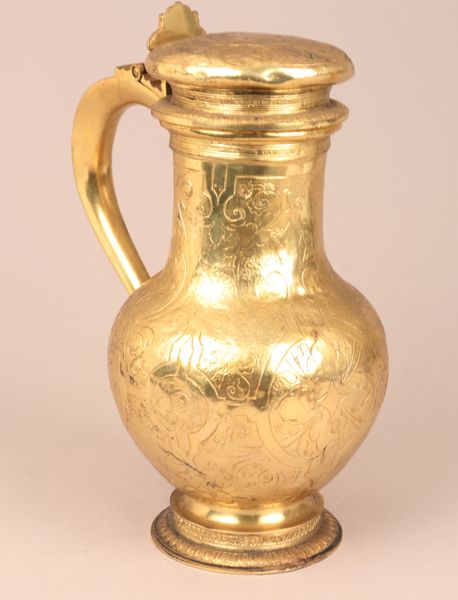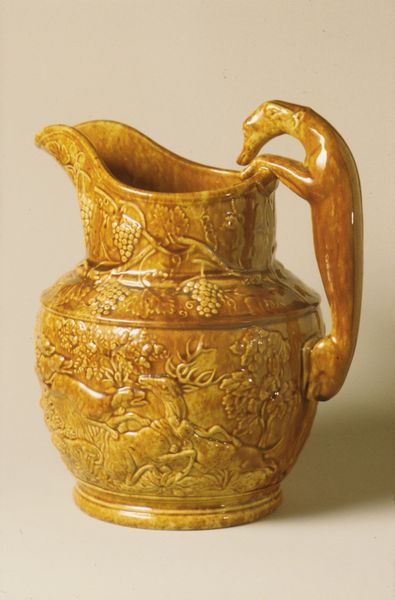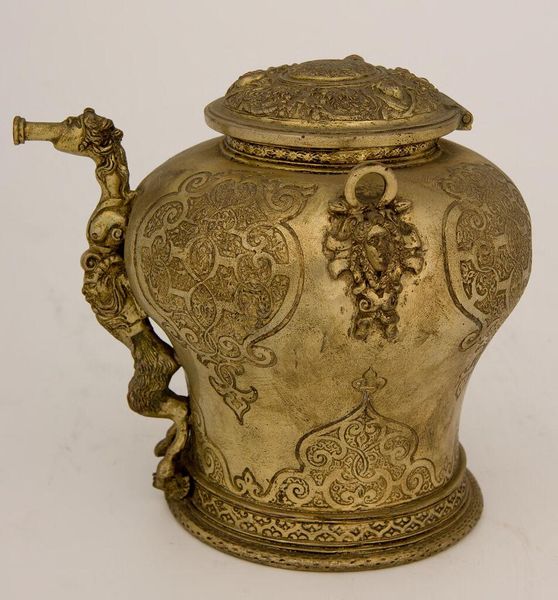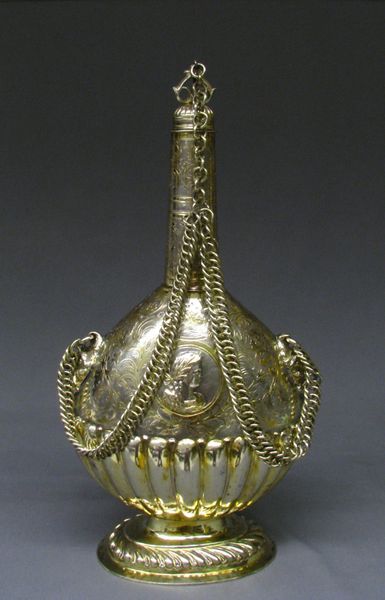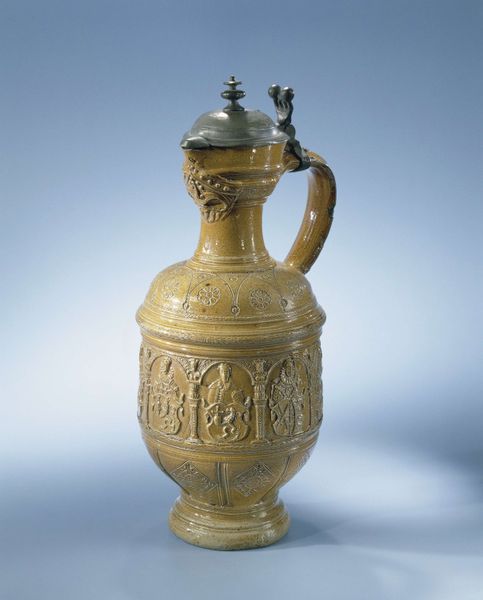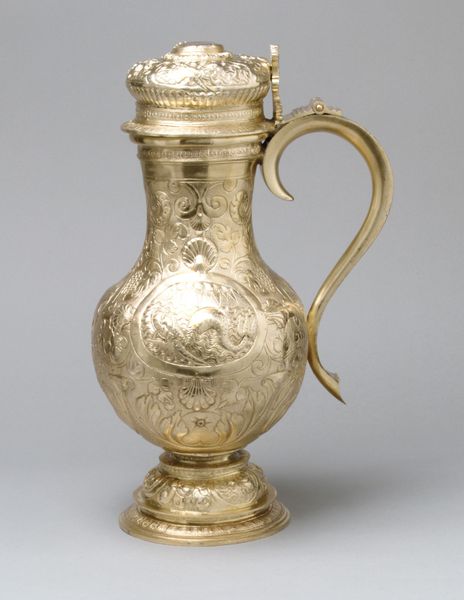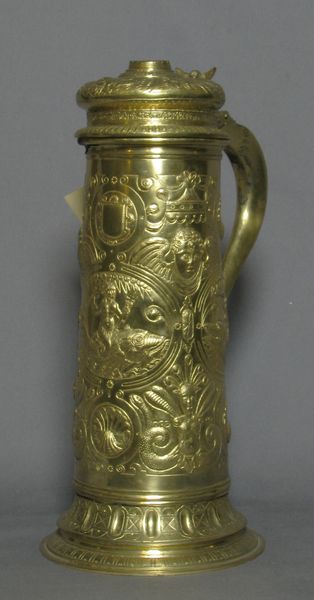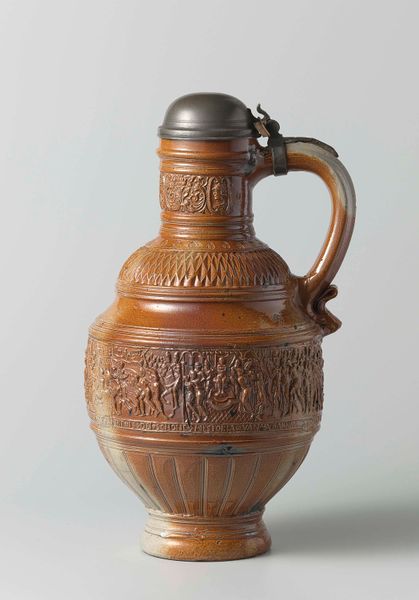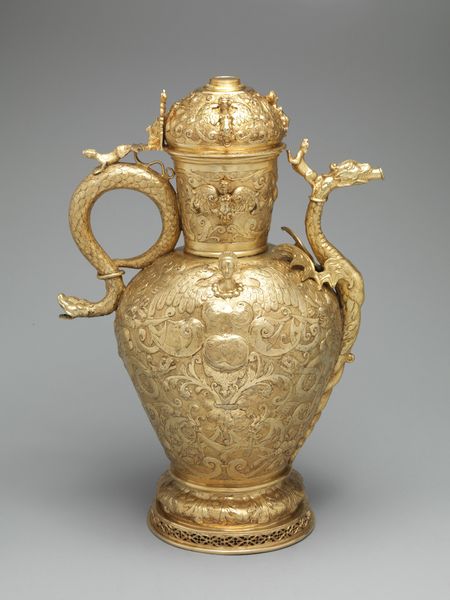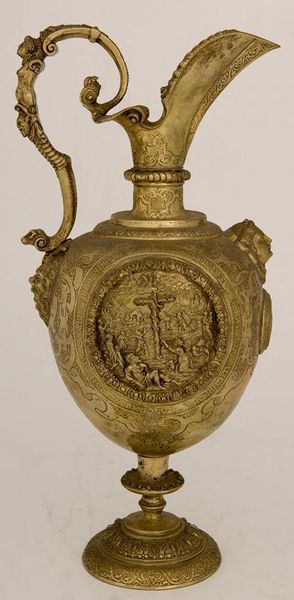
Dimensions: Overall (confirmed): 24 1/8 × 16 1/8 × 12 5/8 in. (61.3 × 41 × 32.1 cm)
Copyright: Public Domain
Editor: This eye-catching piece is an ornate ewer, or large jug with a cover, dating back to the 19th century and currently held at the Metropolitan Museum of Art. It's attributed to Elkington & Co. and appears to be crafted primarily from brass and other metals. It looks grand, almost theatrical. I'm curious, how do you interpret its significance and placement within its historical context? Curator: Well, first, note its embrace of the Baroque style, though in a later era. This was a period known for its elaborate ornamentation. Elkington & Co. tapped into a historical vocabulary, likely intending to communicate wealth, status, and a connection to past grandeur. It's brass, so not inherently precious like gold or silver, which suggests it was about the appearance of opulence for the emerging middle classes who could now afford these mass produced luxury items. Who was consuming such pieces and how do they reflect a shift in societal values? Editor: So, you’re suggesting it's not necessarily about inherent value but more about projecting an image? The material’s deceptive quality serving to create that impression of wealth. Curator: Exactly. Consider the role of industrialization at this time. Mass production techniques allowed companies like Elkington & Co. to democratize luxury, producing elaborate pieces that mimicked the forms and styles of aristocratic silver, but at a fraction of the cost. Did such accessibility of status symbols subtly destabilize or reinforce class structures? The face on the jug’s neck seems intentionally haughty. Editor: That's fascinating. I hadn’t considered the industrial and socio-political implications so directly linked to the object. The very act of making these available perhaps reshaped those socio-economic lines. I’ll definitely look at decorative arts differently from now on.
Comments
No comments
Be the first to comment and join the conversation on the ultimate creative platform.
